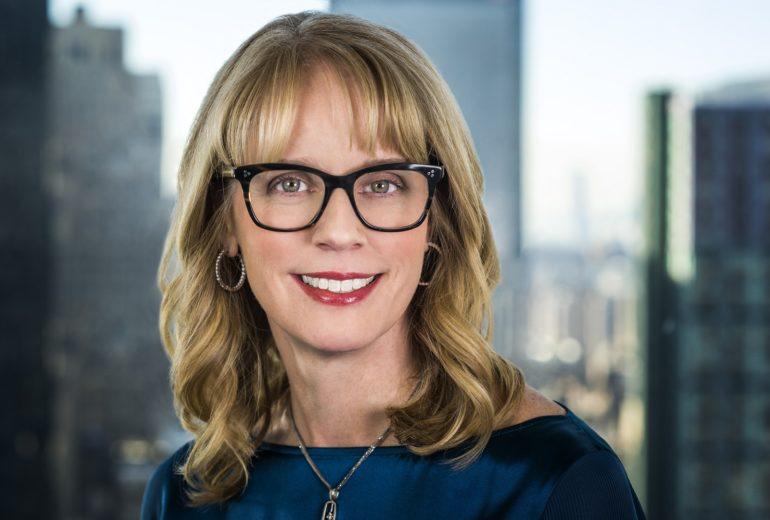Viacom Digital Studios Makes Big Streaming Push to Woo Next-Gen Audiences
By Todd Spangler
LOS ANGELES (Variety.com) – After years of mostly sitting on the sidelines of the digital land grab, Viacom has gotten serious about investing in an online future for its stable of youth-skewing TV properties like MTV, Nickelodeon, BET and Comedy Central.
A cornerstone of CEO Bob Bakish’s digital road map is Digital Studios, led by president Kelly Day, a longtime digital-media exec whom Bakish hired in the fall of 2017. “A lot of people at the time were like, ‘Is Viacom really serious about this digital thing?’” says Day.
There was plenty of reason for skepticism: Even Day acknowledges that Viacom had underinvested in digital. “Their strategy was to just harvest the linear-TV business,” says Brian Wieser, global president of business intelligence for GroupM, WPP’s media investment group.
The new digital push became inevitable as TV audiences continued to shrink, Wieser notes. It’s not getting better: Viacom Media Networks ad sales fell 6% in the fourth quarter of 2018 on lower linear-TV ratings. “At a certain point, it becomes difficult to manage a declining entity,” the analyst says.
A little more than a year into VDS, Day says her team — comprising more than 400 employees — has achieved real momentum, programming specifically for different platforms with new original series and harnessing Viacom’s intellectual property. According to research firm Tubular Labs, in October 2017, Viacom ranked No. 24 among media and entertainment properties for online video views. Fast-forward to February 2019: The company had jumped to No. 9 on that same leaderboard, with 3.54 billion cross-platform views across brands (up 57% from a year earlier).
That puts Viacom in the same league as BuzzFeed (3.5 billion views in February), while it trails other conglomerates like WarnerMedia, Disney and Comcast/NBCUniversal. Viacom’s brands have a collective social footprint of some 860 million fans.
“Our mission is about repositioning our brands in the minds of consumers,” Day says. “Younger audiences had moved heavily into digital, and the brands got a little bit lost in that equation.”
VDS isn’t profitable today, according to Day, as it continues to spend on building the business. Viacom doesn’t break out digital revenue but analysts say it’s still a fraction of the TV side of the house. “Yes, we want it to be a fast-growing, profitable business,” Day says. “But it was a big investment in our brands and content, and that’s still the driving force behind this.”
| , president, Viacom Digital Studios Brooke Alexander/Studio Brooke |
She’s set up a diversified portfolio for the unit, with multiple revenue streams. Last summer, she led the acquisition of Awesomeness — the digital studio and network where Day had been chief business officer for almost four years — from owners Verizon, NBCU and Hearst at a fire-sale price sources have pegged at less than $50 million. VDS also acquired VidCon, producer of the industry’s biggest YouTube and online-video conventions, and influencer-marketing firm WhoSay.
For VDS, Day says, it’s critical to have multiple revenue streams that span online advertising, branded content, live events, content licensing and merchandise. It’s a rough time for companies trying to monetize digital content: In the last few months, Machinima , Defy Media and StyleHaul’s U.S. operations have winked out of existence, and BuzzFeed and Vice Media have undergone substantial layoffs.
“There’s no silver bullet for building a profitable digital media business,” says Day.
Awesomeness tucked into the VDS lineup neatly, with a slate of digital, film and TV originals aimed at young girls — older than Nick’s audience but younger than ’s. In addition to its YouTube channel (with 6.6 million subscribers) and shows for Snapchat, Instagram and Facebook, Awesomeness is the studio behind Hulu series “Pen15” and “Light as a Feather,” as well as Netflix hit teen romance “To All the Boys I’ve Loved Before” (for which a sequel is in the works).
The sale to Viacom “was almost like it was meant to be,” says Rebecca Glashow, co-head of Awesomeness alongside Shelley Zimmerman. “It’s so rarely such a plug-and-play in terms of personalities and our goals.” Glashow acknowledges that Awesomeness went through a stressful period when the company cut nearly 100 employees — about half the staff — after the sale by the company’s prior owners Verizon, NBCU and Hearst. The cuts have made Awesomeness more efficient, Glashow says, as the group now leverages Viacom’s centralized resources like legal, operations, HR and communications groups. “That was something we were never able to do when we had three owners,” she says.
VDS, given its past acquisitions, is now seen as a potential buyer. Day gestures to a visitor sitting on her office sofa on the 26th floor of Viacom’s New York City midtown headquarters. “There are a lot of people who have sat on that couch and said, ‘Please buy my company,’” she says.
For Viacom’s core TV networks, VDS now has an established process for expanding output on social and digital platforms. VDS represents “the fundamentals of how a cable network also becomes responsive to digital,” says Jennifer Danielson, senior VP of digital for , Paramount Network and TV Land.
The traction Danielson’s team saw with the Comedy Central Stand-Up channel on YouTube last fall led to the launch of its first YouTube channel for originals. That features new shows like “Shane Torres Conquers Your Fears,” in which the comedian leads guests through ridiculous immersion-therapy exercises, and upcoming series including “Sex Fails,” featuring cringe-worthy stories of sexual misadventures. The YouTube channel also provides a new home for popular returning digital originals like short-form mockumentary series “Mini-Mocks.”
“Now we have enough content — and the process — to lean into what those originals look like,” says Danielson.
MTV in particular has worked with VDS to tap its library of intellectual property to create digital series and reimagine franchises for a new generation of mobile-first audiences. Those include a reboot of dating show “Singled Out” on YouTube (with Season 1 garnering more than 20 million views to date) and “Basic to Bougie,” tied to talent from the fan-favorite comedy-improv series “Wild ‘N Out.” VDS also teamed with MTV to launch clips from old episodes of “Wild ’N Out” on a dedicated YouTube channel and launched a channel for “Jersey Shore” featuring offshoot series “Cooking in the Crib With Snooki & Joey.”
“Our secret weapon is our treasure trove of IP,” says Jacqueline Parkes, CMO and EVP of digital studios for MTV, VH1, CMT and Logo.
, too, has moved more aggressively in partnership with VDS to feature digital-native talent, including JoJo Siwa, a hugely popular 15-year-old internet star, for whom VDS is producing events, consumer products and originals like the animated “The JoJo and BowBow Show,” co-starring her adorable Yorkshire terrier. “We weren’t doing this a year ago,” says Kim Rosenblum, Nickelodeon’s head of marketing and chief creative officer.
Day says data shows VDS’s increased output isn’t the reason viewers are peeling away from TV. Around 30% of people 18-34 don’t even have cable TV anyway, per Nielsen. “We’re not directing people away from TV to YouTube – we’re tapping into people who are already on YouTube,” she says. “We aren’t just marketing at them, throwing tune-in at them. It’s stuff they like.”
VDS is trying to replicate the model internationally, launching International in August 2018. The group, led by GM Brendan Yam, who previously headed multiplatform content for MTV and Comedy Central, is focused on creating content around its brands outside the U.S., working with 52 international offices to produce content in 17 different languages.
It’s still early days, but Yam says VDS International digital views are already on the rise. “What we’re trying to solve is, How do you knit all these people and brands together to localize great content, and share it around the world, and have these teams work together in a 24-hour-a-day way?”
For now, Viacom is mostly avoiding the rush to subscription video-on-demand to chase market leader Netflix. Day also points to Viacom’s $340 million purchase of free video-streaming start-up Pluto TV, which has 12 million monthly unique viewers — a built-in outlet for VDS content. “Disney and AT&T are going hard after an SVOD model,” she says. “We think there’s a huge opportunity in ad-supported businesses. Consumers like free.”
Day still confronts naysayers who think Viacom is too late to the party. “Companies walk in here and say, ‘We’re building the next MTV,’” she says. But MTV is already a digital powerhouse, Day counters — it snared 8 billion video streams across all platforms in 2018.
“The viewership on these platforms, it’s a hockey stick,” she says. “And advertisers follow eyeballs.”
Anchored by the VDS strategy, Viacom is positioned to win more digital ad business, according to GroupM’s Wieser. But, he adds: “You’re not going to be successful just by showing up. You have to execute.”


